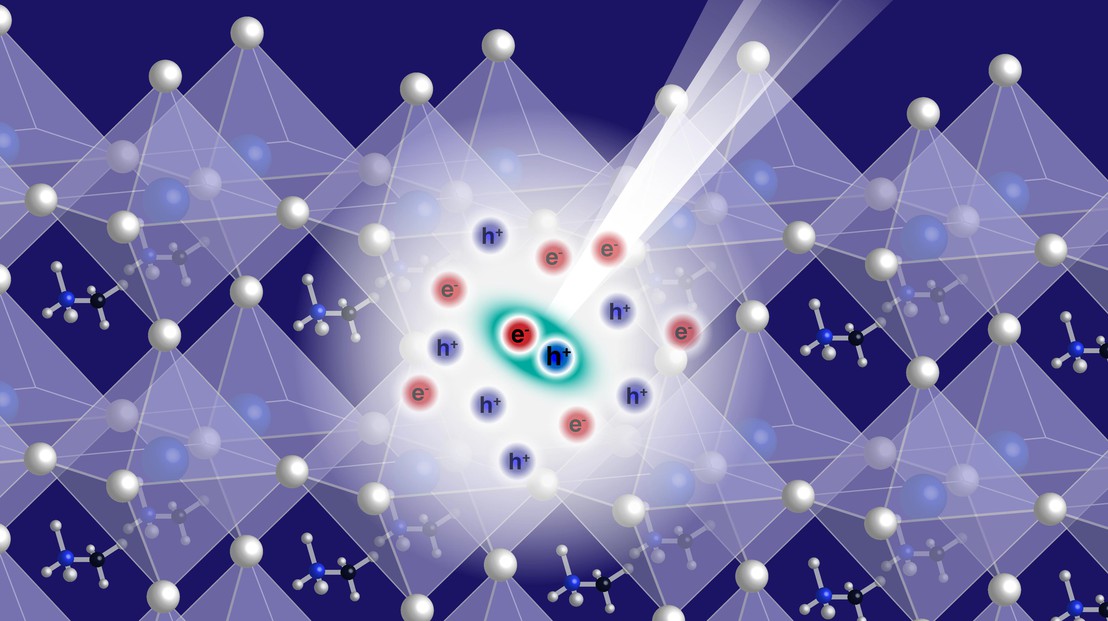
Physicists from EPFL, Switzerland and University of Bremen have unveiled fingerprints of the long-sought particle known as Mahan exciton in the room temperature optical response of the popular methylammonium lead halide perovskites.
The optical properties of semiconductors are governed by the so-called excitons, which are bound pairs of negative electrons and positive holes. Excitons are important because they transport energy (with no net charge) across materials and thus they play a crucial role in a number of optoelectronic devices. The ability to control the excitonic properties of semiconductors (by tuning parameters such as temperature, pressure, charge density, electric and magnetic fields) is key to broadening the range and diversity of applications. In particular, when the density of charge carriers (electrons and holes) increases, excitons tend to melt and a semiconductor eventually turns into a metal at the so-called Mott density.
The researchers mapped how the material’s optical properties modify at increasing densities of charge carriers with a temporal resolution of tens of femtoseconds. Mahan excitons emerged in the optical properties with the distinctive features predicted by theory.
This quasiparticle has now been observed in a room temperature lead-halide perovskite, a cheap and abundant semiconductor that is intensely investigated for applications such as photovoltaics, luminescent materials, or lasers. That paves the route toward the use of perovskites for the Bose-Einstein condensation of hybrid states of light and excitons.
The paper has been published in Nature Communications.
